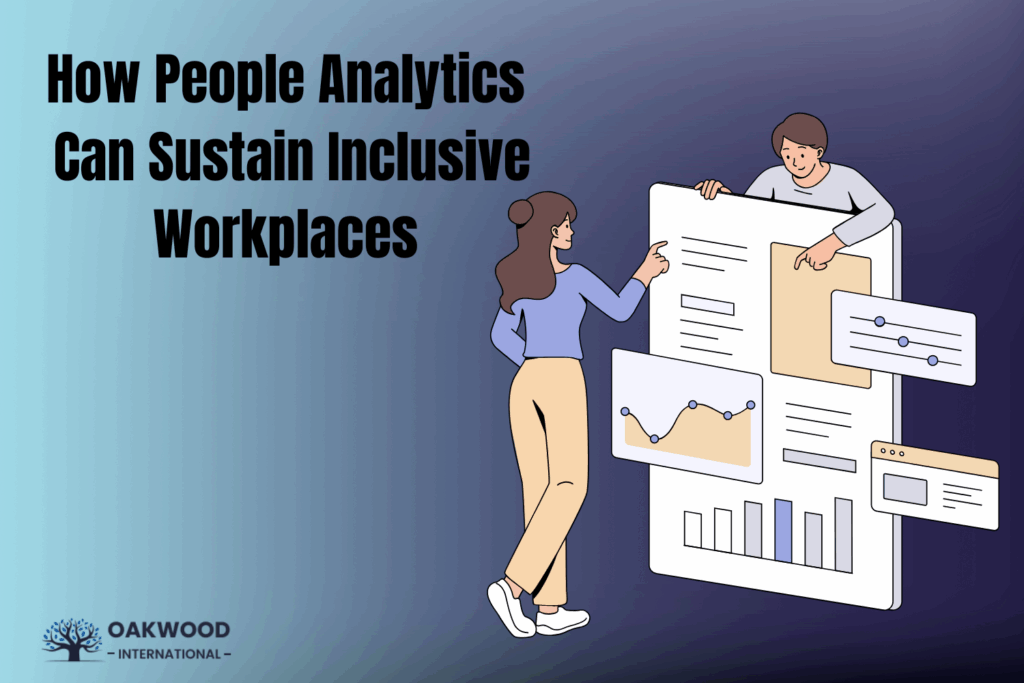Can data truly help create a fairer and more inclusive workplace? The answer is yes when it is used correctly. With a CIPD Qualification, HR professionals learn how to apply People Analytics not just for hiring or performance but to support lasting inclusion. It is no longer enough to have good intentions. Inclusive workplaces require data to identify gaps, inform decisions, and measure real progress. Analytics turns assumptions into action and shows whether your culture works for everyone, not just a few.
Here is how People Analytics can sustain inclusion beyond slogans and surveys.
Table of Contents
- Reasons People Analytics is Essential for Inclusive Workplaces
- Conclusion
Reasons People Analytics is Essential for Inclusive Workplaces
Creating a diverse team is one thing, but sustaining an inclusive environment takes ongoing insight and action. Below are the key reasons why People Analytics plays a vital role in supporting lasting inclusion at work:
Spotting Bias Before It Becomes a Problem
Numbers never lie. But they do reveal the truth.
The potential of People Analytics to reveal hidden bias is one of its greatest benefits. When it comes to hiring, promotions, or recognition, data can highlight inequalities. For instance, despite your belief that your team is diverse, analytics may reveal that some groups are underrepresented in leadership positions. With the help of these insights, you can address the problem before it gets worse. You can question presumptions and take evidence-based action with the correct reports.
Tracking Progress with Real Clarity
Inclusion is not a one-time goal. It is ongoing.
It’s a good idea to set diversity goals. However, they are merely numbers on paper without measurement. You can gain a broader perspective with the aid of People Analytics. This quarter, how many promotions were given to under-represented groups? Do certain groups experience higher rates of employee turnover? Leaders can maintain accountability by using this type of information. It also guarantees that your inclusion initiatives are effective in real life, not only on posters and corporate ideals.
Listening to Voices Often Left Out
Engagement surveys often miss the deeper story.
You can surpass mediocre scores with People Analytics. It allows you to hear from marginalised groups. Employees with impairments may require less help from their managers. Additionally, older employees may feel excluded from digital learning initiatives. Demographic filters, combined with sentiment analysis, allow you to see what individuals are experiencing. In this manner, you are listening better rather than just louder.
Designing Policies that Reflect Everyone
Every employee is unique. That should be reflected in policies.
Standard HR practices may inadvertently overlook real-world needs. For example, parents may benefit from a remote work policy, but colleagues who share spaces may not. People Analytics highlights these subtleties. A more human perspective is obtained when you monitor flexible hour usage or leave trends by group. This enables your group to develop policies and advantages that benefit everyone, not simply the majority.
Removing Guesswork from Hiring and Promotions
Opportunity is the first step towards diversity. Data also makes it equitable.
Unconscious bias may result from hiring and promotion decisions made based on instinct rather than objective criteria. However, transparency is introduced via People Analytics. Data shows who is applying, who is progressing, and who is falling behind. Understanding conversion rates for various candidate groups helps ensure that the pipeline is inclusive at every stage. This gradually creates a team that embodies the principles you discuss.
Helping Leaders Build Inclusive Habits
Effective leaders are flexible. They can do it more quickly using data.
Managers can assess the inclusivity of their teams using People Analytics dashboards. The data personalises everything from team satisfaction to pay equity. It’s about growth, not assigning blame. Leaders begin to alter their behaviour if they are aware of their numbers. This could entail supporting inclusive hiring panels or mentoring someone who is not in their typical social network. The shift begins modestly but gradually permeates the entire culture.
Predicting and Preventing Culture Gaps
The signals you read today are the first steps towards the civilisation you desire tomorrow.
Analytics is not limited to historical analysis. It foretells future events. For example, you can intervene sooner if inclusion scores decline before people depart. You can take action before individuals lose interest if there is a connection between burnout and delays in promotions. You can establish a work environment where employees want to stay and feel noticed by using these early warning signs.
Conclusion
Sustaining inclusion takes more than good intent. It needs awareness, consistency and clarity. That is where People Analytics shines. It turns your values into visible action and your blind spots into opportunities. If you want to lead with purpose and data, a CIPD Qualification can prepare you to do just that. A course from Oakwood International can support your journey into making inclusion measurable and real.

